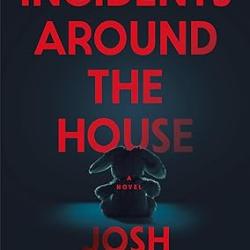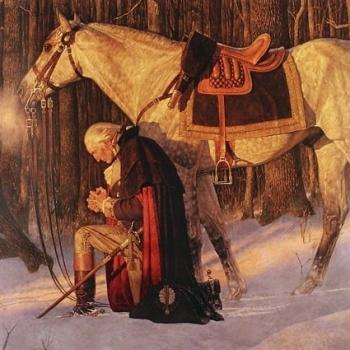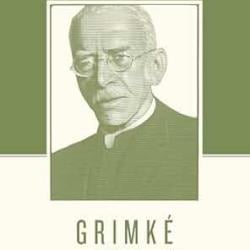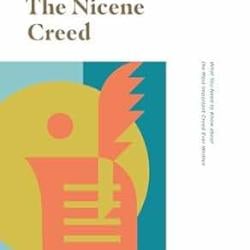A reflection on Mark Richard’s House of Prayer No. 2
By CHRISTIAN HAMAKER
Here at Schaeffer’s Ghost, we’re all about “watching books, reading films.” Mark Richard’s House of Prayer No. 2 walks the line: It’s a book about a writer who’s authored a screenplay (2008’s war drama, Stop-Loss, which I reviewed here). But it’s much more than that.
House of Prayer No. 2 is not a book about movies, nor does it focus on screenwriting, although Richard’s screenplay plays a key role late in the memoir. The book tells the story of a successful writer—he’s penned articles for the New Yorker, Harper’s, Esquire and the New York Times—trying to establish his career while being drawn back to the faith of his childhood. It’s a book about a man’s journey to the only place he can find stability and satisfaction. 
Richard is, like all of us, born imperfect. In his case, his imperfections are outwardly noticeable: He has deformed hips. His mother prays fervently for him, while his father drinks.
Richard’s power as a writer is apparent in the first words of this compelling, hard-to-put-down memoir, in which he establishes a unique voice while recounting his own upbringing in Texas:
Say you have a “special child,” which in the South means one between Down’s and dyslexic. … Give the child a sandbox to play in, in which scorpions build nests. Let the mother cut the grass and run over rattlesnakes, shredding them all over the yard. Make the mother cry and miss her mother. Isolate her from the neighbors because she is poor and Catholic. (p. 1)
Richard moves to Southside Virginia, where he learns the geography of the state through the prism of religious history—another indication that religion informed much of his upbringing, even though Richard’s childlike faith, to the extent he had any, would go dormant until much later in life:
Jamestown is barely to the north, the town is full of its English ancestors, some Irish, some Huguenots. … There is ancestor worship in your town. Quakers had spread abolition among the upper Baptists and lower Methodists and most had opposed secession, yet many rode off to join the fight for their own reasons. (p. 56)
It’s in Virginia that Richard discovers a talent as a broadcaster, and an interest in religious culture, after being recruited to do a local radio show from a studio “on the black part of town.” It’s there that Richard takes turns hosting the Gospel Show, and where he watches a black preacher broadcast sermons.
Watching this man through the studio glass, you see that he is a believer. He believes in the hope of redemption and in the promise of salvation. You lose track of time. You let him run over. You wish you had his passion for Christ Jesus. You think that someday you would like to be saved as well. (p. 72)
But Richard’s path to any sort of salvation would wind through troubles. He gets arrested as a youth, then sprung from jail thanks to the kindness of a preacher who “preaches that the end of pride is the beginning of forgiveness, that when a man in sincerity says I have sinned, it gives God a chance to say I forgive.” (p. 74)
Richard’s story progresses into adulthood, into his finding his calling as a writer and into an extended period of spiritual wandering. But the faith of his mother and the faith of his childhood is never too far from the author. He moves away, but when he returns home, he attends a black church, the House of Prayer No. 2 of the title, where there is “little heat, the one toilet is clogged, there’s an outhouse out back if you’re really in need, and the bass player is missing a string on his bass guitar,” (p. 187). Richard recalls:
You and your mother are, as usual, the only white congregants in House of Prayer No. 2. … There is much praise and music and glad uplifted faces around you, but this day you remain seated, unmoved. You have been coming to this church for the last fifteen years when you are home. … There will be a couple dozen spontaneous hymns, a lot of personal testimonies, at least two collections, a sermon, and an altar call where many will be slain in the Spirit. (p. 187)
Richard finds a spiritual home at House of Prayer No. 2 that he can’t find among his fellow writers he mingles with on the West Coast. He’s honest about his struggles during the three-hour-plus services, but grateful for the House of Prayer No. 2 and for Pastor Rick. The congregation prays for Richard and his family. When Richard shares with Pastor Ricks his “stumbling faith walk,” Pastor Rick “listens and doesn’t offer platitudes, he offers narratives, and it comforts you.” (p. 188)
Richard’s story culminates in an act of faith that leads to spiritual blessing. It’s the sort of thing that more traditional Christians—of which I am one—might look at askance. We’ve seen how “faith promises” can lead to bankruptcy, and how high-powered preachers can prey on poor congregants (or, in the case of televangelists, poor viewers) to line their own pockets. We might question “second blessings” and being “slain in the Spirit.” But we know we don’t have all the answers, and we root for faith in those who don’t have it, or who might have lost it along life’s hard road.
To that end, Richard’s book is a balm, a strikingly-written account of a writer’s journey through physical and spiritual hardship to a place of sudden, unexpected contentment. My only complaint about House of Prayer No. 2 is that its abrupt ending left me wanting an update. In an age of unnecessary and profit motive-driven sequels, here’s a book that will have me seeking out Richard’s future work, hopeful for more prose that effectively conveys the sometimes mysterious relationship between art and faith.












